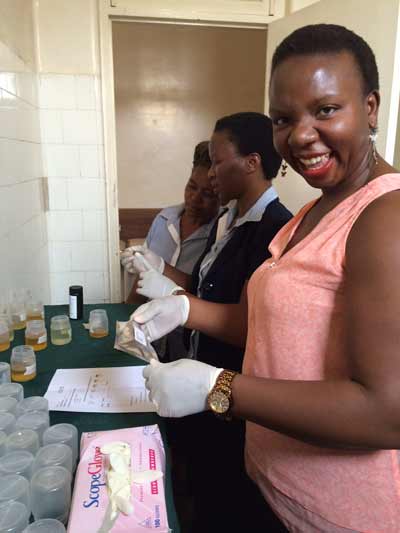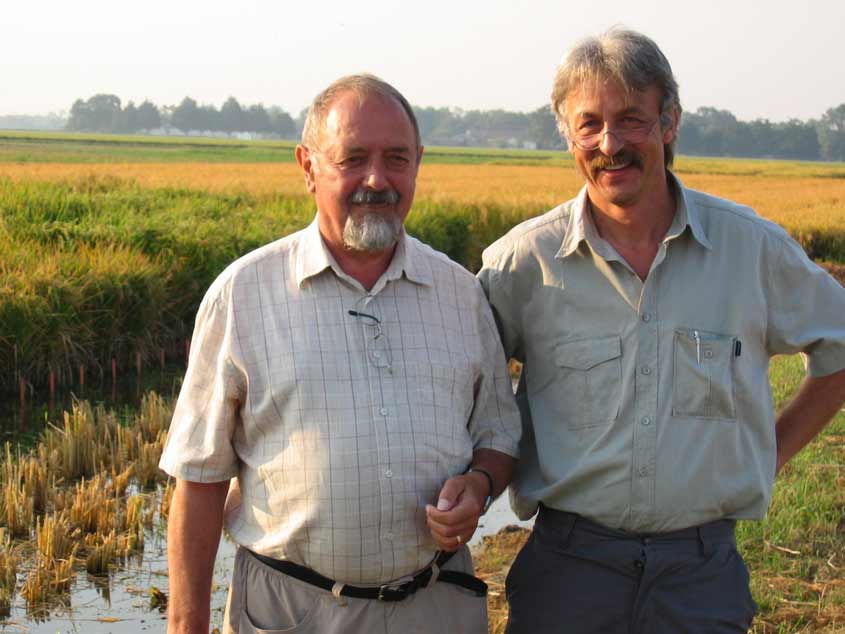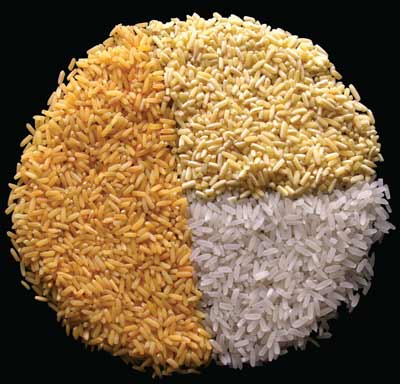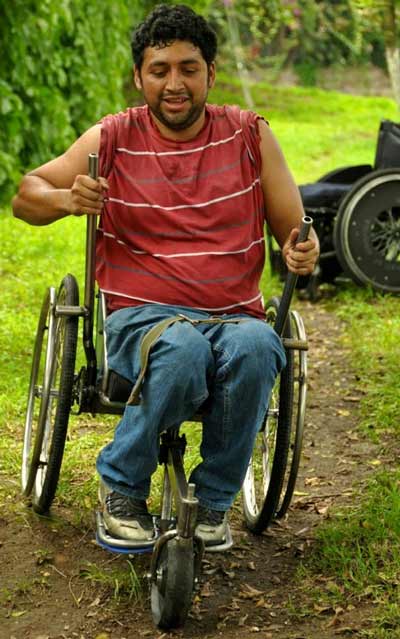
Patents for Humanity: improving lives across the globe
By Edward Elliott*, Attorney Advisor, Patents for Humanity Program Manager, United States Patent and Trademark Office (USPTO), USA
*Authored by an employee of the United States Patent and Trademark Office; no copyright is claimed by the United States in this article or associated materials.
As this year’s World Intellectual Property Day theme recognizes, innovation has the power to improve lives. People in industrialized countries benefit from innovation every day – from faster computers, more powerful mobile phones, safer transportation, cleaner energy, improved medical treatments and countless other products and services. Commercial markets and incentive structures have proven very effective at deploying innovation to improve lives.

leading cause of prenatal death for mothers and babies
worldwide, mostly in low- and middle-income countries.
Startup company GestVision has developed a rapid,
affordable urine test that caregivers can use to diagnose
the condition in low-resource settings
(photo: Courtesy of GestVision).
But not everyone is so lucky. Impoverished populations in developing regions and elsewhere struggle with basic necessities like clean water, adequate nutrition and medical care. These regions often do not attract the same attention from innovators, for reasons that include scarcity of capital, lack of infrastructure, low levels of education, insufficient legal protections and a host of other factors. That is not to say innovation does not happen in these regions – clearly it does, because humans everywhere are innovative creatures. But the market mechanisms that are so effective in deploying innovation in advanced economies come up against unfamiliar challenges when it comes to reaching the less fortunate around the globe.
Patents for Humanity is a United States Patent and Trademark Office (USPTO) awards program that recognizes innovators who overcome these challenges to bring life-changing technologies to those in need. Its purpose is twofold. First, it highlights success stories so that others can learn how to reach underserved communities. Second, by providing value to award winners, the program seeks to offset some of the diminished commercial incentives in these regions, thereby encouraging more innovation projects aimed at helping impoverished communities. This value includes public recognition of winners’ work and a voucher for accelerating certain matters before the USPTO.
Program structure
Participants submit applications describing how they are using patented technology to benefit the less fortunate in five broad categories of humanitarian need: medicine, nutrition, sanitation, energy and living standards. Once the application period closes, we run a two-phase selection process with volunteer experts from outside the USPTO, including university faculty and technology transfer professionals, to review the entries according to program criteria. The review committee then sends a list of recommended award winners to the USPTO.
The first Patents for Humanity competition launched in early 2012 as a pilot program. Since then, it has attracted support from the White House and members of the U.S. Congress as well as many companies, trade associations, public interest groups and universities. In 2014, the USPTO announced that Patents for Humanity would be an ongoing program. Subsequent rounds of Patents for Humanity awards were made in April 2015 and most recently November 2016.

Recipients
To date, Patents for Humanity has given 21 awards to all types of entities, from large multinational corporations to small companies and startups as well as universities and non-profit organizations. These recipients show how even a small group of people with focus and commitment can impact lives around the globe. The program is open to all U.S. patent owners and licensees. Three awards have gone to organizations based in Europe.
Past award winners include patent owners using their portfolios to decrease the cost of HIV and malaria drugs, develop more nutritious food sources, bring solar energy to off-grid villages, combat unsafe counterfeit medicines and purify billions of liters of water using inexpensive packets. Award winners from the past two cycles include:
- Sanofi, for supplying large quantities of anti-malarial compounds on an at-cost basis for use in developing countries.
- Novartis, for identifying new drug compounds for potentially treating drug-resistant tuberculosis and donating them to the non-profit TB Alliance for further development.
- SunPower Corp, for delivering clean solar-powered lighting to replace kerosene in villages in the Philippines through converted shipping containers.
- American Standard Brands, for distributing 1.2 million “SaTo” safe toilet latrine pans to communities in Africa and Southeast Asia.
- GRIT (Global Research Innovation & Technology), for developing an all-terrain wheelchair using readily available bicycle parts for use in India, Guatemala, Haiti and other locations.
- Golden Rice, for creating vitamin A-enriched strains of rice to prevent thousands of cases of blindness and death each day among people who subsist primarily on rice.
- Nutriset, for fighting childhood malnutrition by creating a worldwide network of partners to supply their PlumpyNut formula using local producers.
- GestVision, for developing a quick, simple diagnostic test for preeclampsia, a potentially life-threatening pregnancy complication, for use in developing regions.
- Case Western Reserve University, for creating a low-cost, accurate malaria detection device using magnets and lasers for quicker diagnosis and treatment.
- Global Good Fund, for creating a passive cooler that can keep vaccines cold for 30 days, and for donating dozens of units to the fight against Ebola and other relief efforts.
- U.S. Food and Drug Administration, for developing an improved meningitis vaccine production process that has been used to immunize 235 million people in high-risk African countries.
Here are three of the remarkable stories of Patents for Humanity winners.
GestVision
Preeclampsia is a pregnancy complication that is the leading cause of prenatal death for mothers and babies worldwide, mostly in low- and middle-income countries. Although most deaths are preventable, approximately 63,000 women die from preeclampsia annually. In developed countries, it can be diagnosed by regular doctor visits and laboratory tests, allowing treatment before severe symptoms present if caught in time. But in developing regions without regular prenatal care, the problem is often undiagnosed until serious complications such as seizure, stroke or organ failure occur.
Startup company GestVision has developed a rapid, affordable urine test that caregivers can use to diagnose preeclampsia in low-resource settings. The test detects misfolded proteins in urine associated with the condition, which may be shown by a colored dot similar to a pregnancy test. GestVision’s test kits are currently being used in clinical studies around the world, including in Bangladesh, Mexico and South Africa, under a grant to the Research Institute at Nationwide Children’s Hospital from Saving Lives at Birth, which is a collaboration of USAID, the Bill & Melinda Gates Foundation and others to seek groundbreaking prevention and treatment approaches for pregnant women and newborns in poor, remote communities. Following initial research at Yale University, GestVision was created to further develop the technology. GestVision is working on a manufacturing process to produce the kits in larger volume.
Golden Rice

Vitamin A deficiency is the leading killer of children globally, claiming up to 3 million lives annually. It is also the leading cause of childhood blindness. Most cases occur in Asia where the staple crop, white rice, eaten by 3.5 billion people daily, lacks vitamin A sources typically found in animal products and leafy vegetables.
Golden Rice is a genetically enhanced variety of rice which provides a source of vitamin A for people in need, making it one of the world’s first bio-fortified foods. Professors Ingo Potrykus of ETH Zurich, Switzerland, and Peter Beyer of the University of Freiburg in Germany invented the technology after a decade of research. Since 2000, they have worked with Dr. Adrian Dubock and the non-profit Golden Rice Project to donate the rice to resource-poor communities in developing countries. Local Golden Rice varieties have been under development by public sector institutions in Bangladesh, China, India, Indonesia, the Philippines and Viet Nam. Through licenses with national governments, farmers are free to plant, grow, harvest, locally sell and replant seed. There are no licenses for farmers and no fees for use.
GRIT (Global Research Innovation & Technology)

graduates from the Massachusetts Institute of Technology (MIT) in
the USA to increase mobility for people with disabilities, especially
on rough terrain. The chair, which is made from standard bicycle parts,
has been distributed in Brazil, Easter Island (Chile), Guatemala,
Guinea, Haiti, India, Kenya, Nepal and the United Republic of
Tanzania (photos: Courtesy of GRIT).
An estimated 65 million people in the developing world require wheelchairs. Conventional wheelchairs do not function well on the rough and uneven terrain commonly found in developing regions. GRIT was created by engineering graduates from the Massachusetts Institute of Technology (MIT) to increase mobility for people with disabilities around the world. Their three-wheel Leveraged Freedom Chair uses a push-lever drivetrain to help people move over uneven terrain such as broken pavements, dirt roads, fields, hills, rocky terrain and more. It is built from standard bicycle parts to enable local repairs with available materials. After graduating, the MIT students founded GRIT to bring the product to market, and MIT assisted by transferring the patent rights to GRIT for further development.
The chair has been distributed in partnership with the World Bank, the Red Cross and others in Brazil, Easter Island (Chile), Guatemala, Guinea, Haiti, India, Kenya, Nepal and the United Republic of Tanzania. A new version of the chair, known as the Freedom Chair, is now available in the United States for recreational use, helping Americans move beyond the pavement.
The role of patents
Sometimes people ask why innovators working to benefit those who are less fortunate seek patents on their inventions, particularly in developed economies where they do not plan to use them. We have found from our winners that patents can be very worthwhile, even for those who plan to give their technology away. Among other things, patents can help in securing funding, forming partnerships and attracting talent, particularly for small organizations.
Patents also enable dual-licensing business models for technologies that have uses in both the developed and developing world. Under such models, the invention may be provided at affordable prices very close to the manufacturing cost in developing regions, while it is offered to consumers at standard commercial prices in advanced economies. For example, 2015 winner GRIT licenses its all-terrain wheelchair technology to low-cost manufacturers for use in developing regions while also selling a version for recreational use on off-road trails in the United States. In some models, sales from industrialized nations can be used to fund activities in developing regions.
For more than 200 years, patents have supported technological and economic progress in industrialized nations. As we strive to bring the benefits of modern technology to the rest of humanity, patents continue to play an essential role in creating lasting solutions. Success will come from a diverse range of approaches, including new models for businesses and public–private partnerships. Patents for Humanity seeks to recognize innovators of all types by celebrating their varied contributions to our common goal: bringing prosperity to every corner of the globe.
For more information on Patents for Humanity, including the latest announcements, visit www.uspto.gov/patentsforhumanity.
The WIPO Magazine is intended to help broaden public understanding of intellectual property and of WIPO’s work, and is not an official document of WIPO. The designations employed and the presentation of material throughout this publication do not imply the expression of any opinion whatsoever on the part of WIPO concerning the legal status of any country, territory or area or of its authorities, or concerning the delimitation of its frontiers or boundaries. This publication is not intended to reflect the views of the Member States or the WIPO Secretariat. The mention of specific companies or products of manufacturers does not imply that they are endorsed or recommended by WIPO in preference to others of a similar nature that are not mentioned.